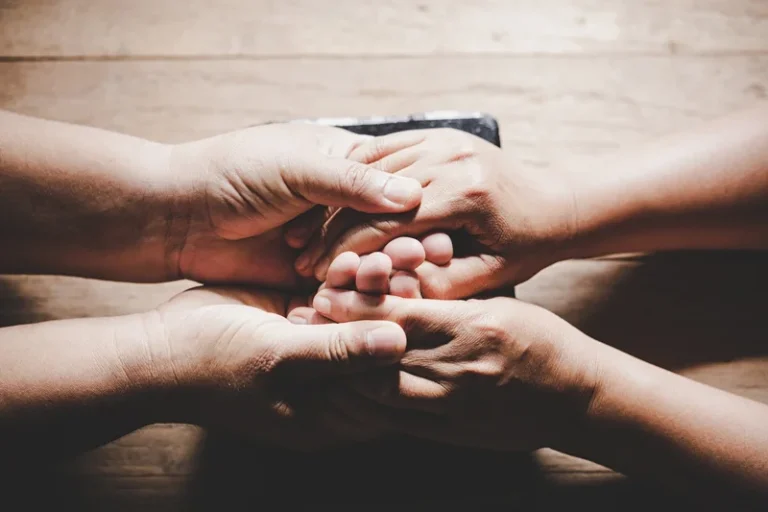
It’s an excellent internet resource for finding a sober living facility that suits your needs. If Vanderburgh House is not the right fit for you, we invite you to look https://ecosoberhouse.com/ at this great guide to choose a sober living facility. The Substance Abuse and Mental Health Services Administration (SAMSHA) fully endorses level three sober homes.
- When searching for a sober living home, choose an environment that best supports your sobriety.
- The best home for your individual needs might be one that is worth traveling for.
- All of a sober house’s residents are expected to pursue better health and a substance-free life.
- Peers can serve as living examples of what is possible in recovery, offering hope and encouragement to their fellow residents.
- Credit and debit cards are widely used for their convenience and the ability to track expenses easily.
- Given these struggles, men-only homes usually focus on early treatment, mental health support, relapse prevention, and aftercare programs.
Does Health Insurance Cover Sober Living?
These environments help individuals rebuild their lives, gain independence, and transition smoothly back into society with a stronger foundation for continued recovery. A sober living house (SLH) is a residence for people recovering from substance use disorder. Sober living homes are meant to be safe, supportive environments that emphasize the importance of building a community and camaraderie with others. Individuals typically enter an SLH after being discharged from a clinical treatment center before returning to their previous home and routine. Recovery residences are less expensive than living at a rehabilitation facility or detox center because fewer services are offered. But many sober homes require residents to attend support group meetings or participate in 12-step programs or outpatient treatment, which may be an additional cost for residents to consider.
What are the Challenges of Oxford Houses?

From medical detox to rehab to aftercare, we are focused on supporting your recovery every step of the way. Both sober living and addiction treatment are important components of the recovery process. They are not mutually exclusive but complementary options to help people achieve and maintain a sober life. Many sober living homes require residents to regularly attend 12-step meetings or other forms of peer support.
Accountability and Support

It developed four levels of support that can be used to characterize most sober living homes. There is no in-house treatment or requirement to attend a specific recovery program, but 12-step participation is popular in Oxford Houses. A new house member must be interviewed by current residents and must receive an 80 percent vote of approval to be accepted.
How Do People Pay for Sober Living?
- Most sober living homes are privately run and not government-funded, but financing options may be available.
- This community helps combat feelings of isolation and loneliness that can often accompany the recovery process.
- This shared understanding creates a unique bond and a sense of empathy among residents.
Sober houses in New York provide the transitional housing that is less controlled than a treatment environment but more structured than living alone. Sober living homes, or halfway houses, can be a great resource for those who need a place to stay after detox and while in recovery from alcohol or drug addiction. They also provide a transitional place to live for people just getting out of a rehab facility or jail who are not yet ready to live on their own.
Depending on the city, neighborhood and services offered, rent can range from $300 to $2,000 per month. Some sober homes do not require residents to pay utility bills, but utilities may be rationed to avoid waste. Living with others that are successful, demonstrates to them that it is possible and helps them reach that point.
- Some sober homes do not require residents to pay utility bills, but utilities may be rationed to avoid waste.
- Certain age brackets can experience specific challenges when recovering from addiction.
- Sustaining sobriety reduces potential future expenses related to healthcare, legal issues, and loss of productivity, thereby offsetting the initial expenses of sober living accommodations.
- Many offer residents a safe place to stay for as long as they need provided they remain clean and sober.
What Are The Licensing Requirements for Sober Living Homes?

Residents may choose to engage in community support groups, counseling, and anything else to help them stay sober. The Oxford House model, distinct from the Oxford Group, focuses on self-supported and democratically run residences, providing a safe space for recovering individuals to support each other in maintaining sobriety. While Oxford Houses operate independently of AA, they recognize the importance of active participation in AA or Narcotics Anonymous as vital to recovery. Prices vary, but most of the time it costs about the same as it would cost to live in a modest apartment or home.

Adding on to previous Levels’ services, Level III includes an emphasis on life skill development, offsite clinical services and in-house service hours. Halfway houses traditionally serve individuals recently released from incarceration, acting as a halfway point between prison and their own residence. A stay at a halfway house may be court mandated, but standard SLH residency is entirely up to the individual. A variety of other studies have also found that sober living homes appear to be an effective component of the recovery process.

Sober living homes, also known as recovery housing or halfway houses, are structured living environments for individuals who are in the process of recovering from substance use disorders. These residences serve as a bridge between formal treatment programs and mainstream society, providing a supportive and substance-free space that fosters continued sobriety. Residents typically have completed a rehabilitation program and are expected to abstain from alcohol and drug use while living in these homes. Sober living homes, sometimes referred to as transitional living arrangements, halfway houses, or recovery residences, can be a step down from formal substance use treatment programs. These homes can offer an in-between option for individuals after they complete a treatment program and before they return to their homes and lives.
Many sober living homes take insurance, so if you have insurance, call the number on the back of your insurance card to find out what is covered. Sober living homes can be beneficial for those who are transitioning from inpatient treatment, but they may be too far ahead in the process for many who are looking to start their recovery journey. Sober Living Some homes require signing out when leaving the home and signing in when returning. Getting a job or volunteering may also be part of some sober living programs. In addition to mandatory regulations, some sober living homes opt for voluntary certification from organizations like the National Alliance for Recovery Residences (NARR).
